Photos: Enrique’s Journey | Chapter Two
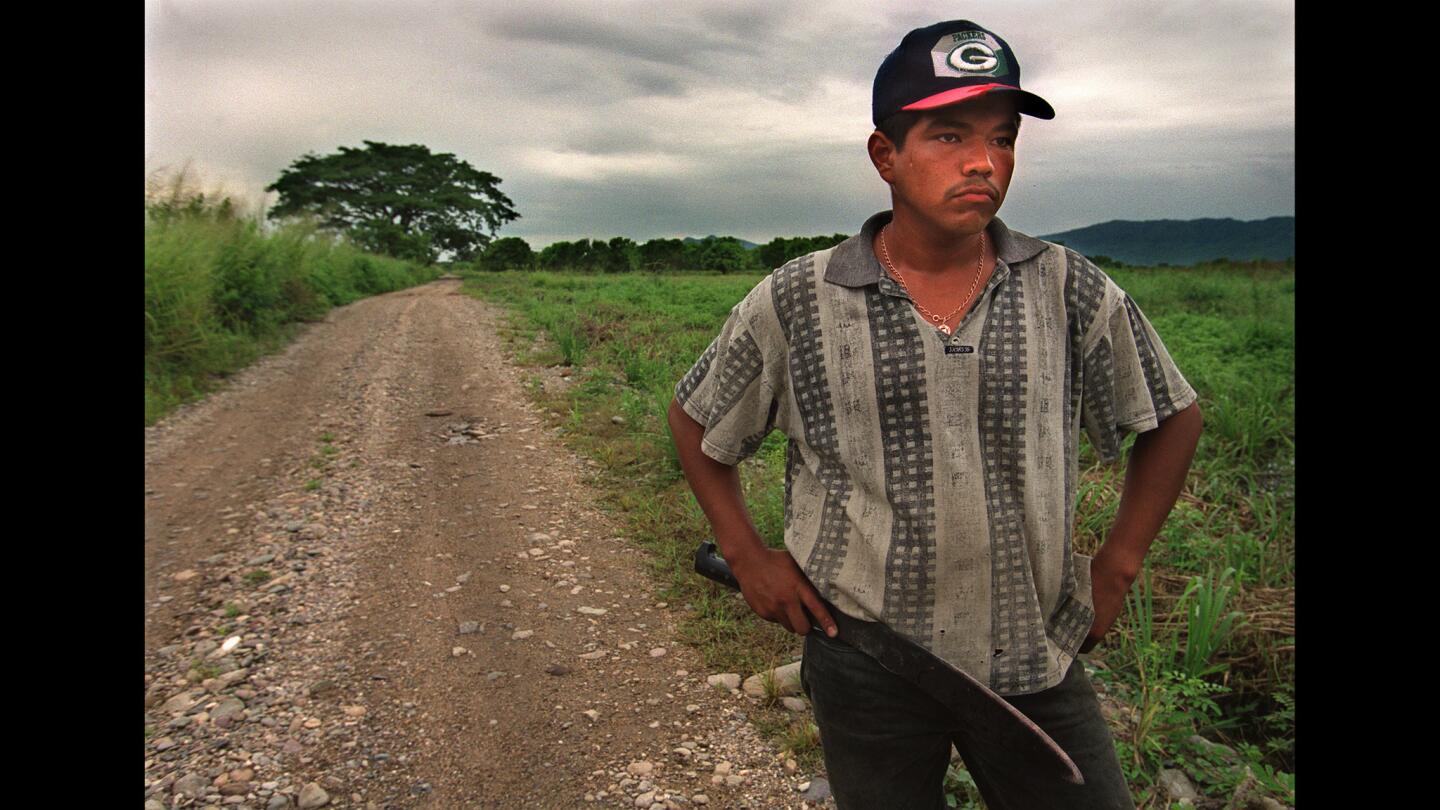
Near this spot in Las Anonas, Mexico, Sirenio Gomez Fuentes was startled to see Enrique, bleeding and nearly naked, stumbling toward him. (Don Bartletti / Los Angeles Times)
Badly Beaten, a Boy Seeks Mercy in a Rail-Side Town.
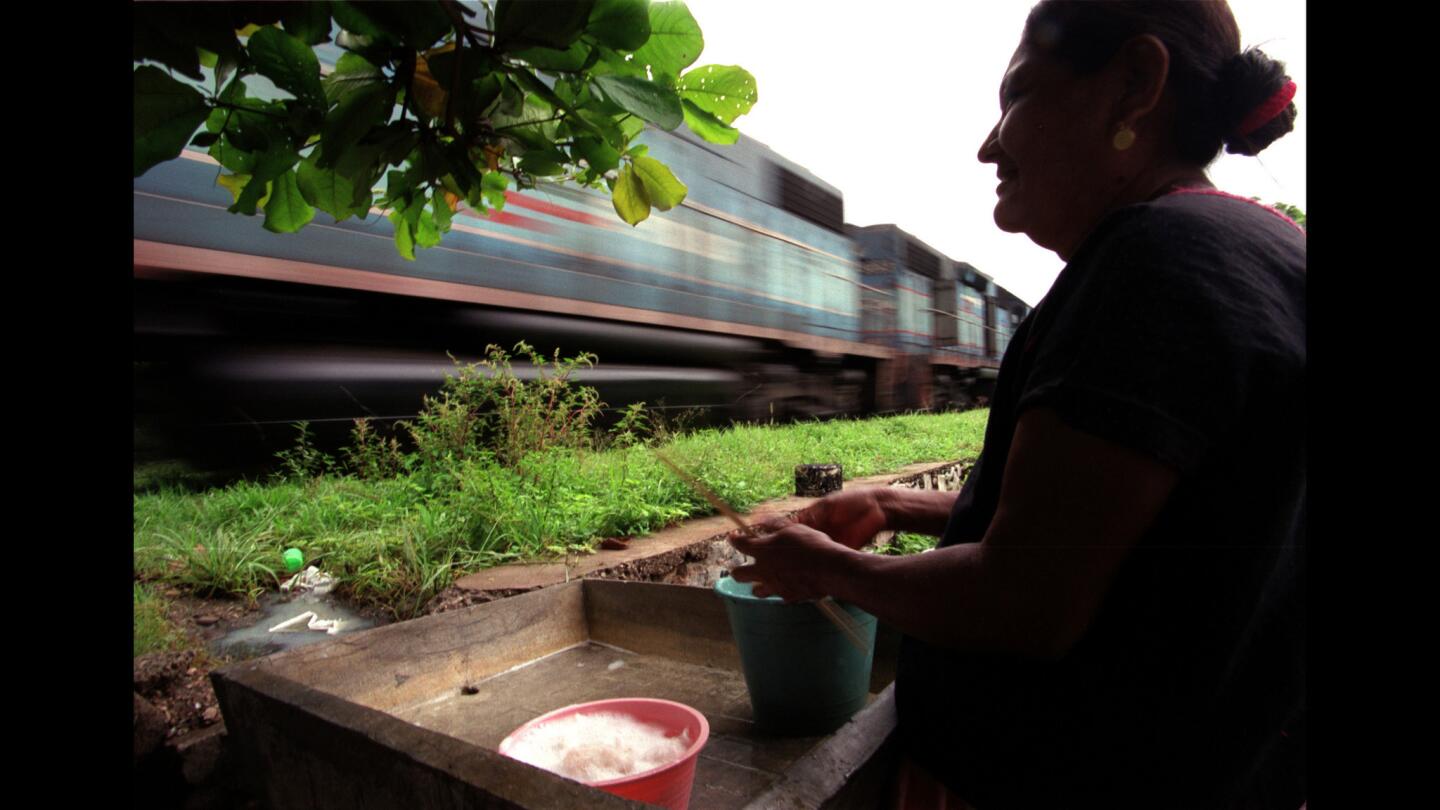
A woman washes dishes at a wooden sink as a train speeds by the hamlet of Las Anonas, Mexico. Most people there earn about 30 pesos -- roughly $3 a day. When a resident saw Enrique, she pressed 10 pesos into his hand; several other women did the same. (Don Bartletti / Los Angeles Times)
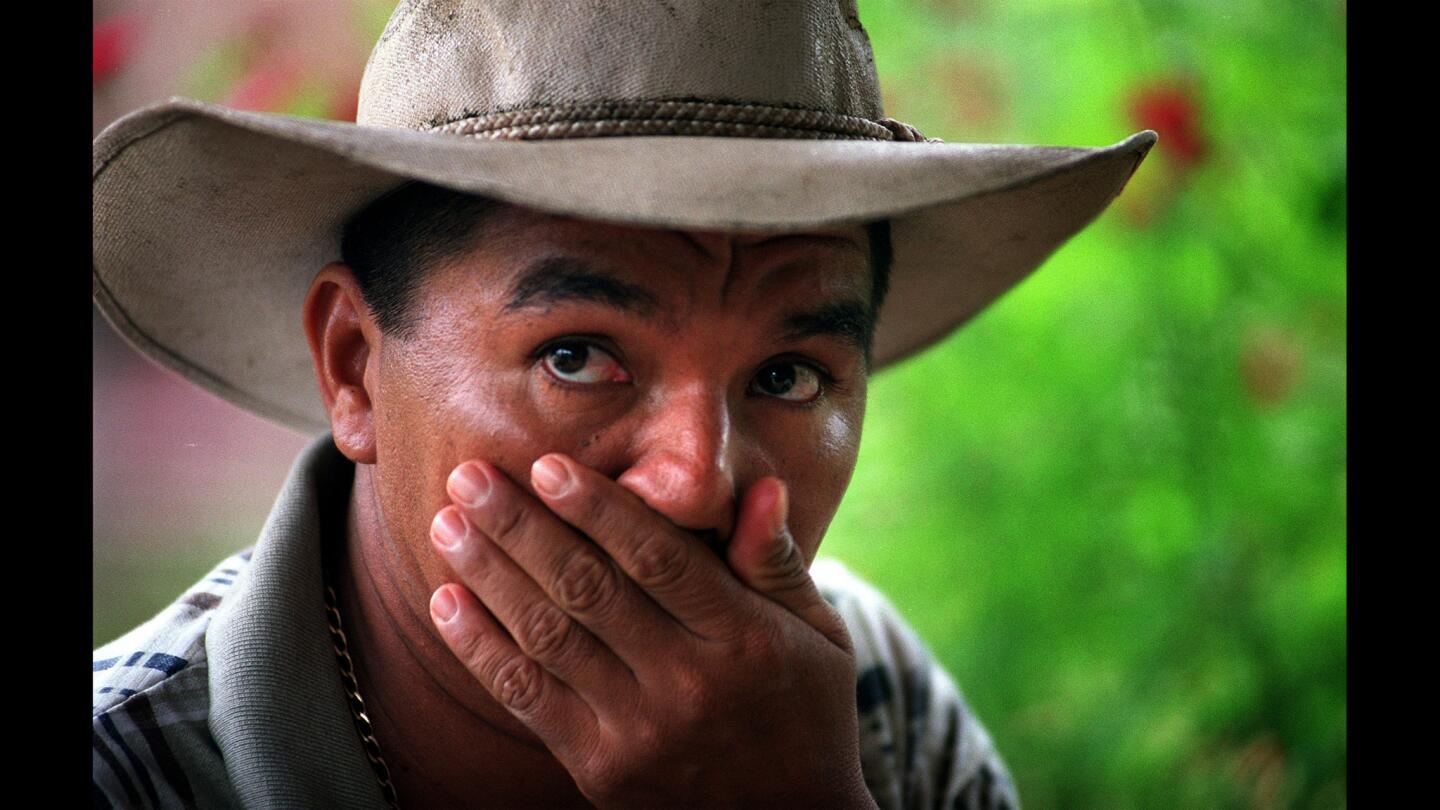
After Carlos Carrasco, above, saw Enrique, he sought help from a fellow mayor. The colleague balked. In 18 months, he had already buried eight migrants. (Don Bartletti / Los Angeles Times)
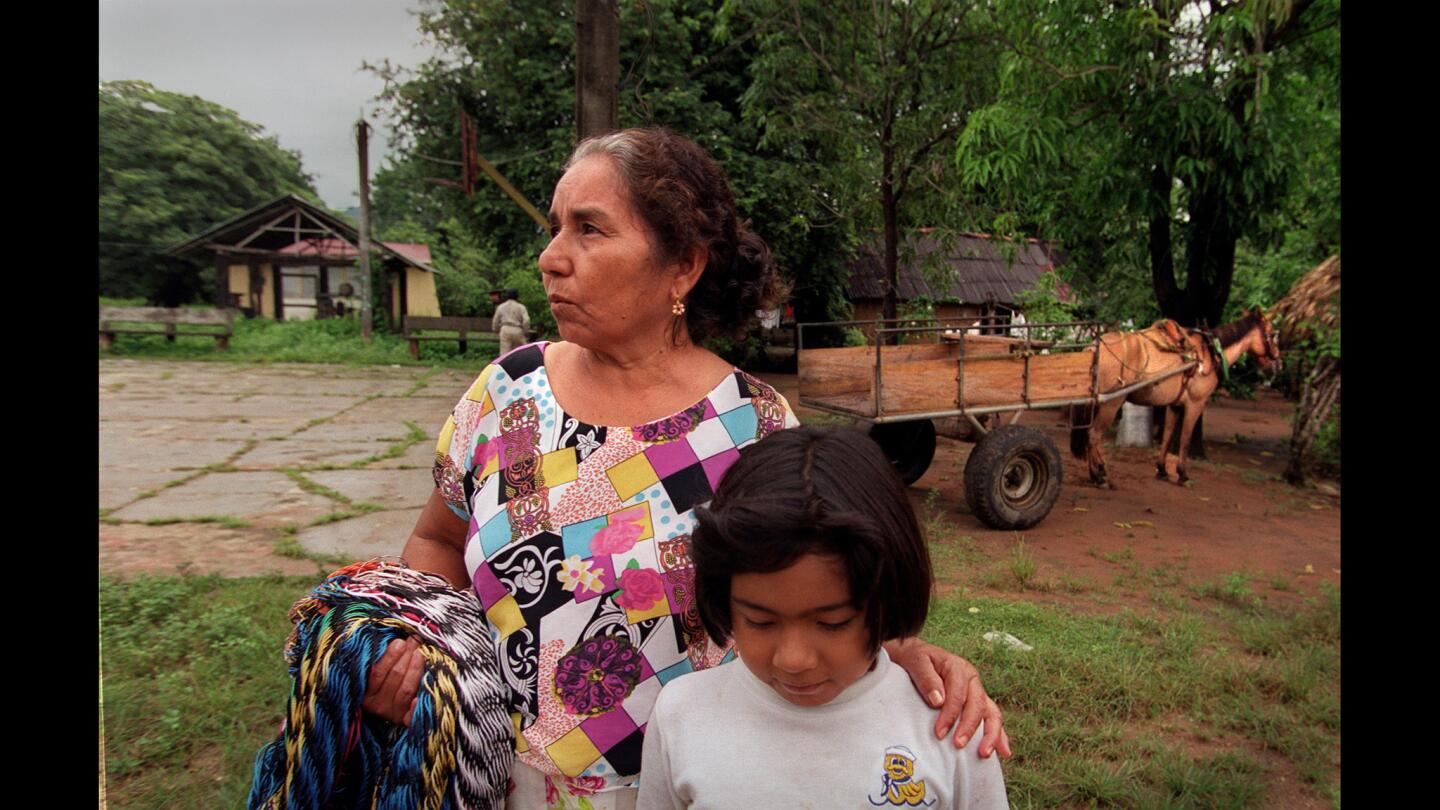
Lesbia Sibaja, mother of Carlos Carrasco, made a broth for Enrique. Carrasco gave the boy a shirt and shoes and implored a colleague who was passing by: Take this kid to a doctor. (Don Bartletti / Los Angeles Times)
Advertisement
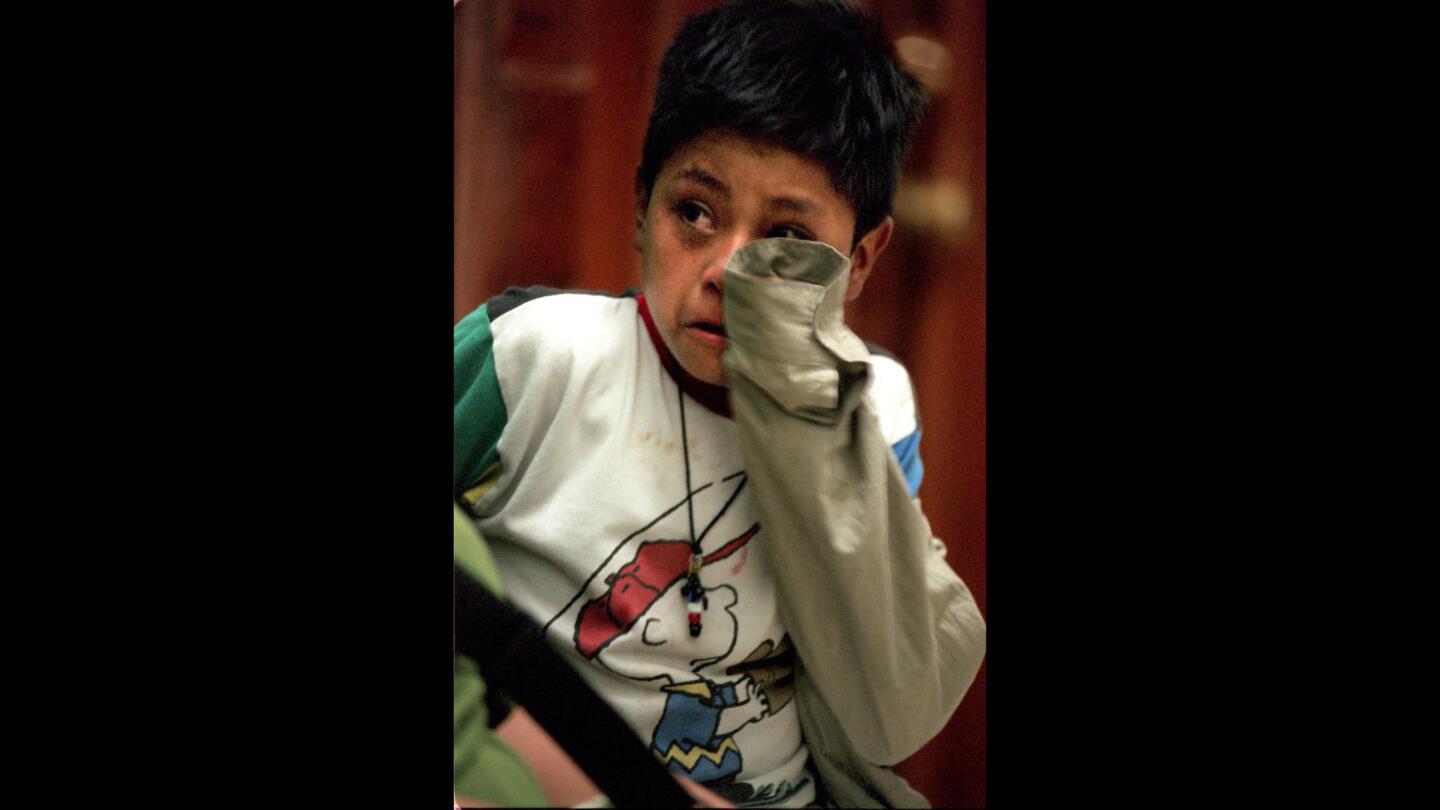
Francisco Gaspar was left behind when his smuggler failed to notice that he hadn’t boarded a train. (Don Bartletti / Los Angeles Times)
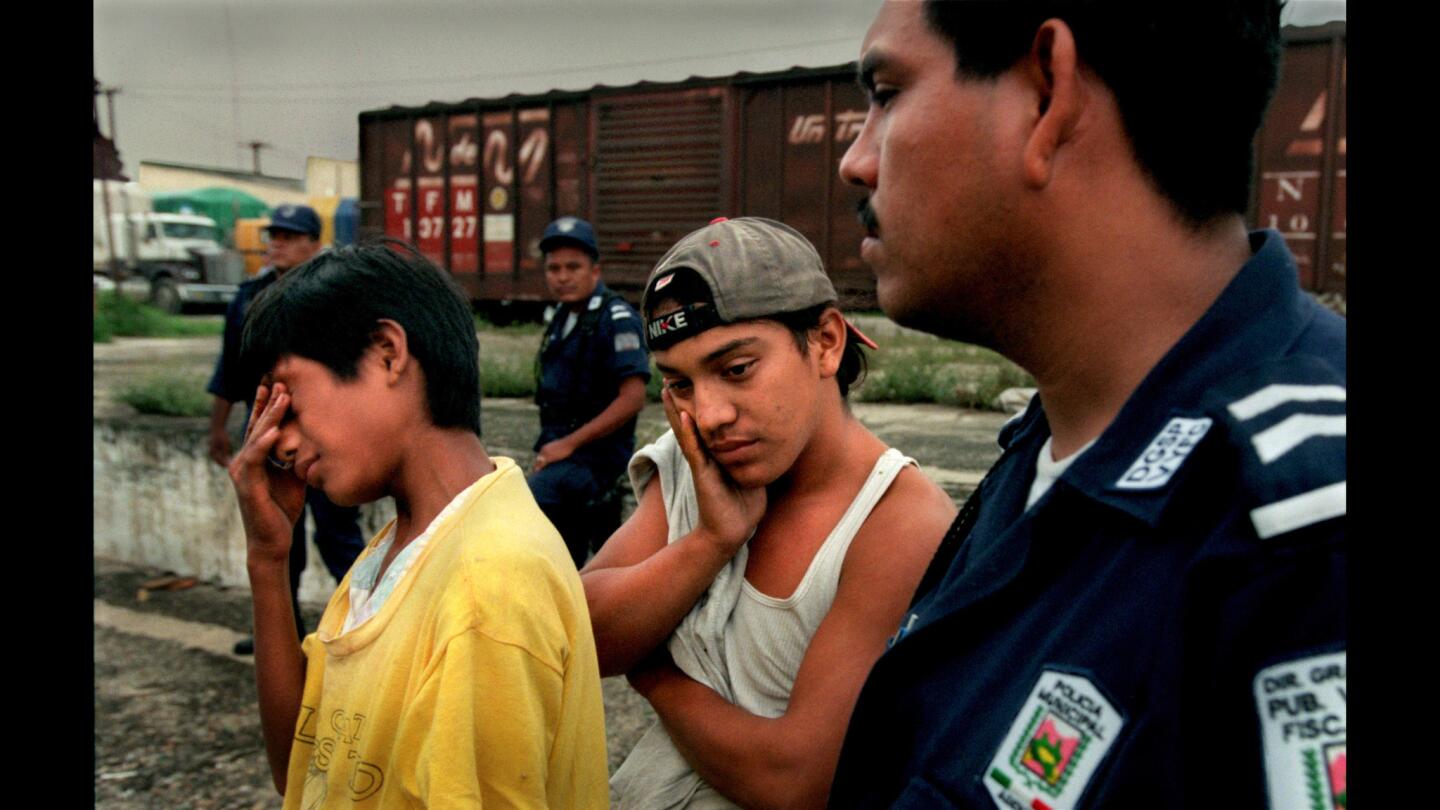
Thirteen-year-old David Velasquez, left, and Roberto Gaytan, 17, wait to be jailed after they were caught in Tapachula, Mexico. The Guatemalans were headed for Los Angeles and North Carolina. (Don Bartletti / Los Angeles Times)
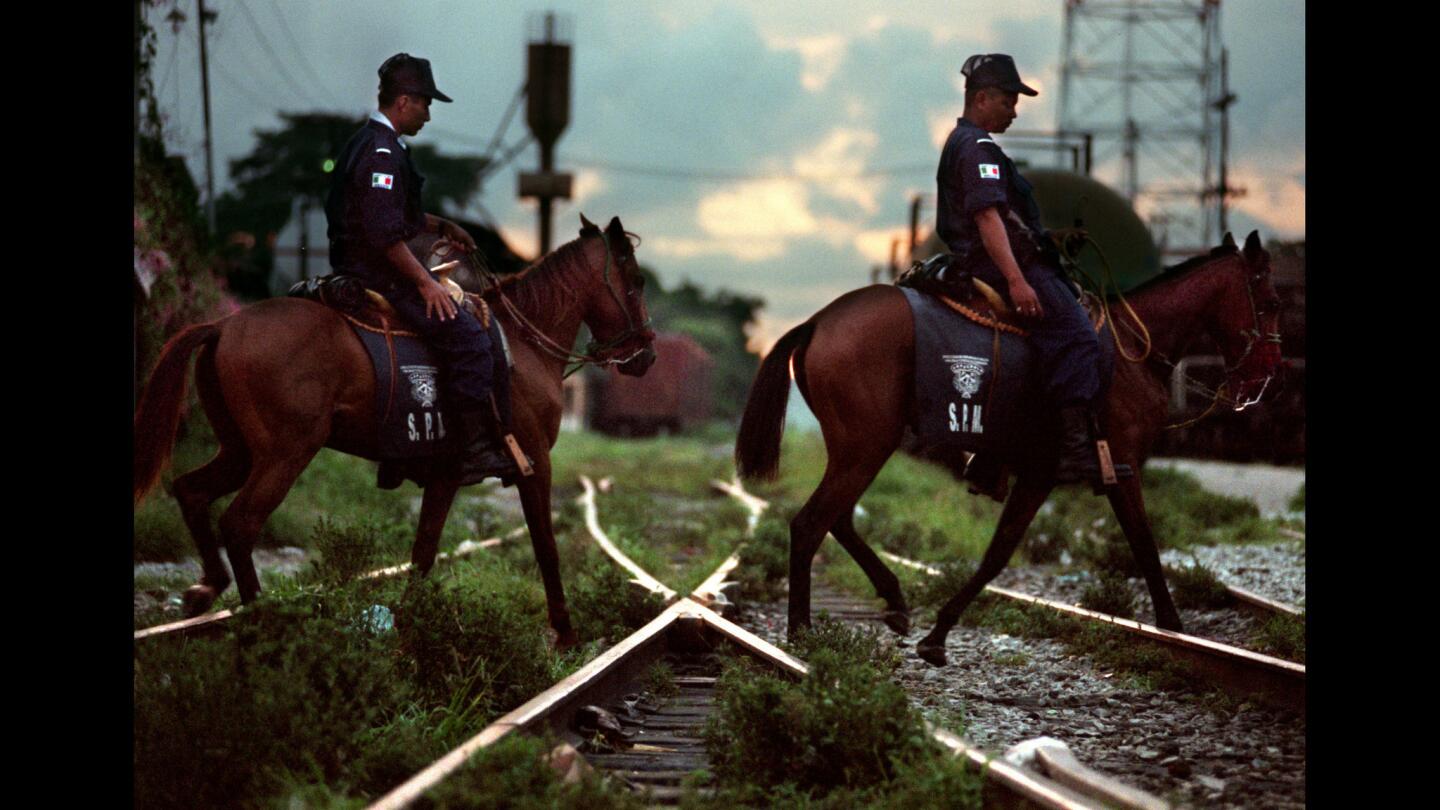
Law enforcement agents patrol the rail yard in Tapachula, a migrant launching point just north of the Guatemalan border that became all too familiar to Enrique. (Don Bartletti / Los Angeles Times)
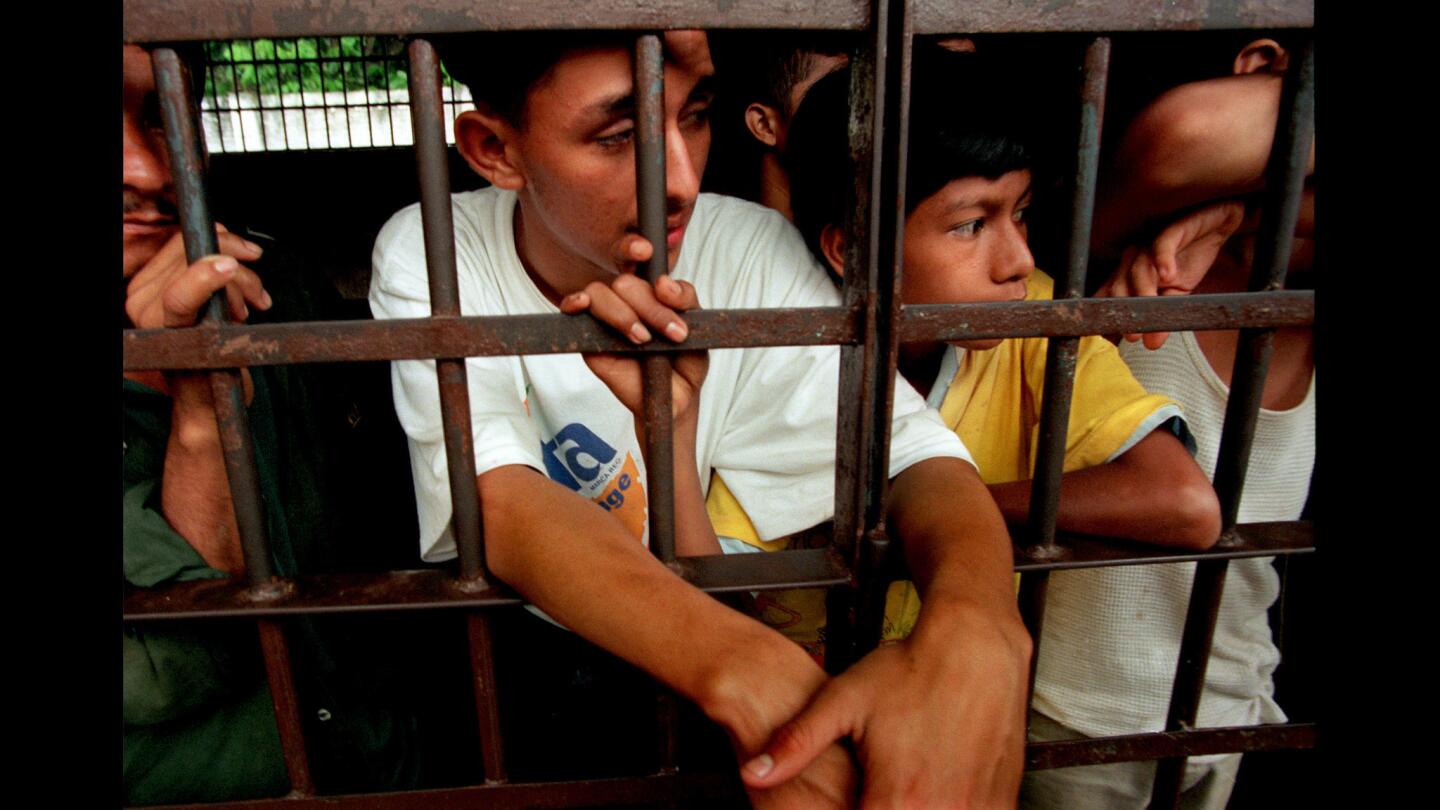
Migrants arrested in a dawn sweep at the Tapachula rail yard are behind bars before their probable deportation. Central Americans are sent back to the Guatemalan border on “el bus de lagrimas,” the bus of tears. Making as many as eight runs a day, the buses deport more than 100,000 a year. (Don Bartletti / Los Angeles Times)
Advertisement
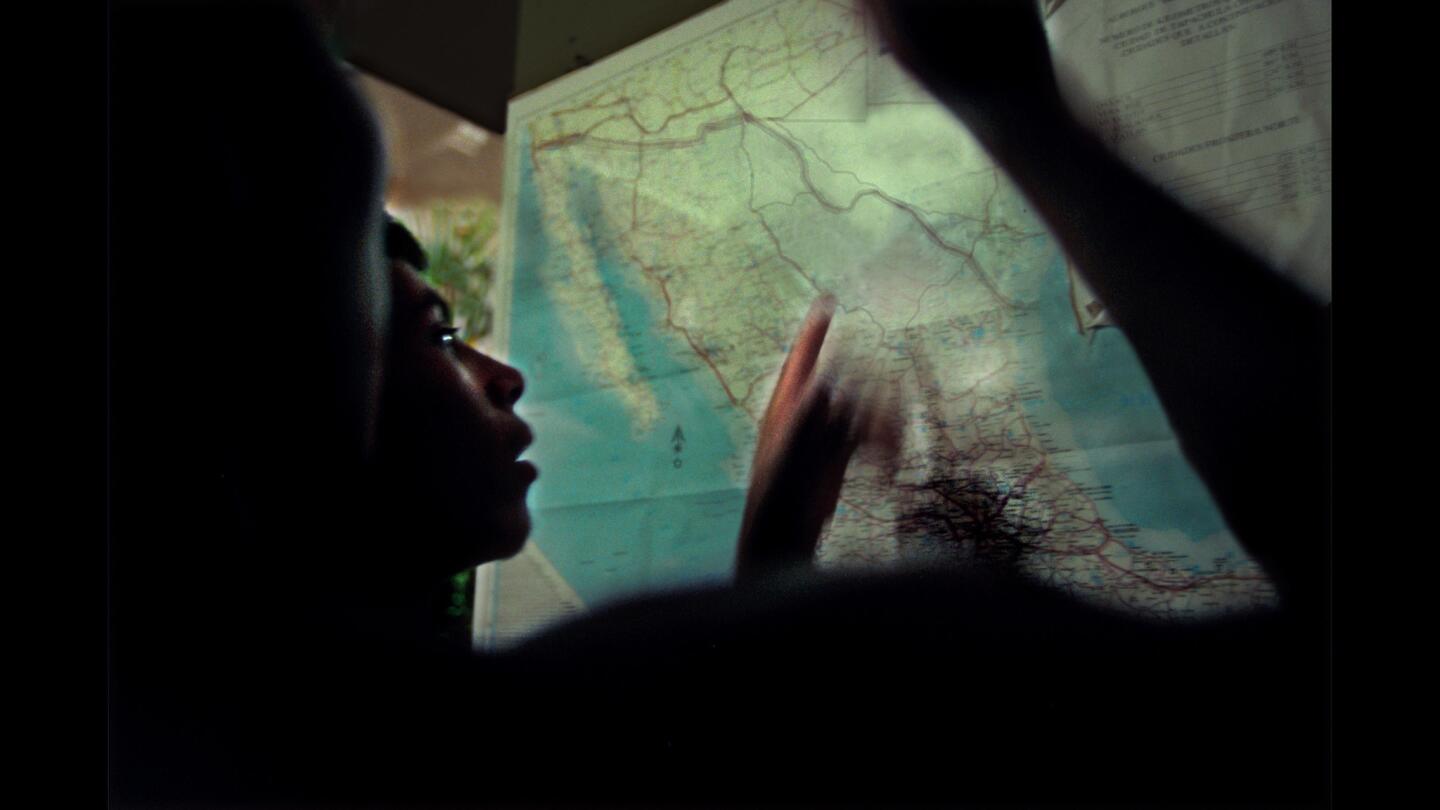
Pointing to a map at the Albergue Belen migrant shelter in Tapachula, Mexico, two Central American boys talk about the rail lines they hope will lead them to the United States. The shelter is a temporary refuge just north of the Guatemalan border. (Don Bartletti / Los Angeles Times)
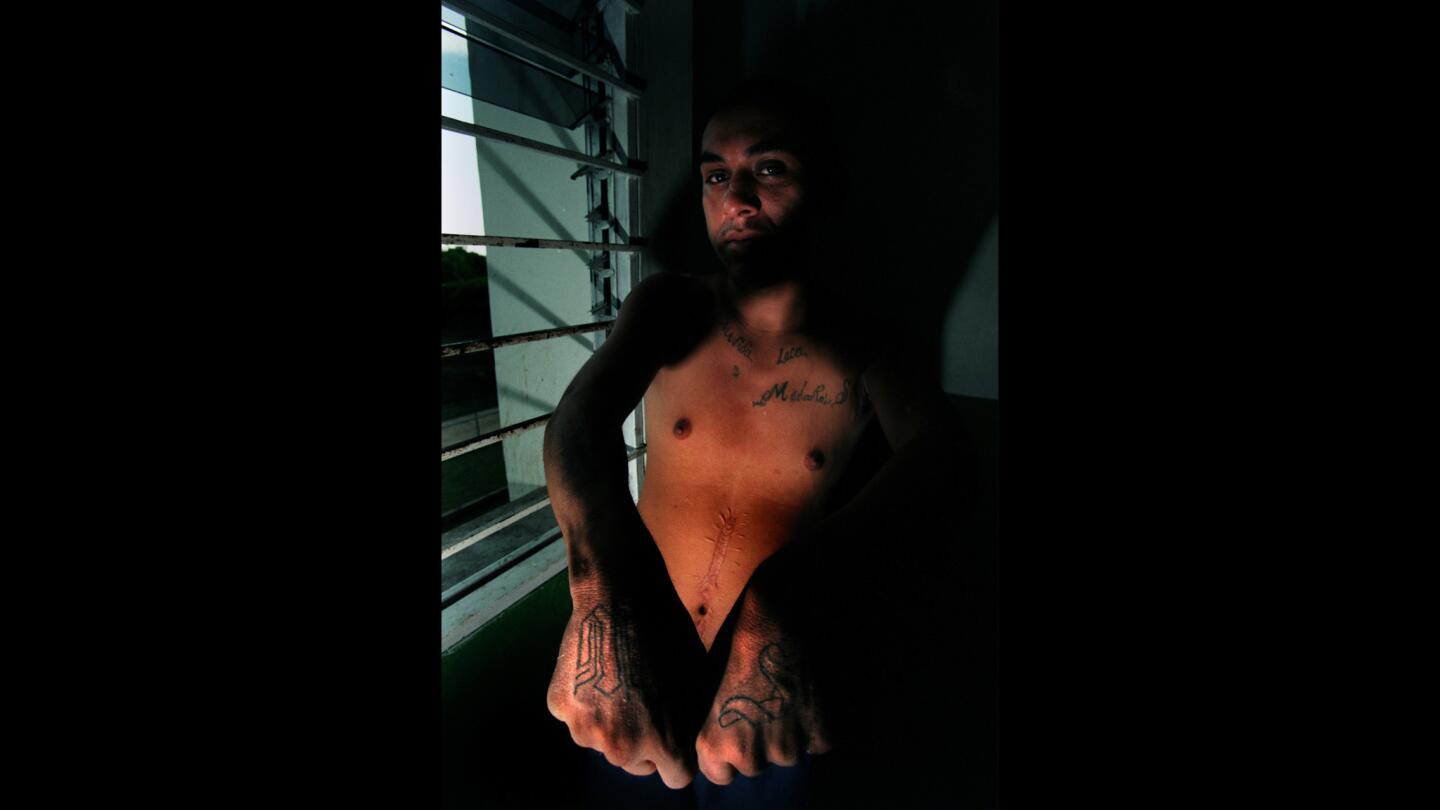
Jorge Mauricio Mendoza Pineda shows his Mara Salvatrucha tattoos at a Chiapas jail, where he was serving time for robbing and assaulting three migrants with a machete. (Don Bartletti / Los Angeles Times)







